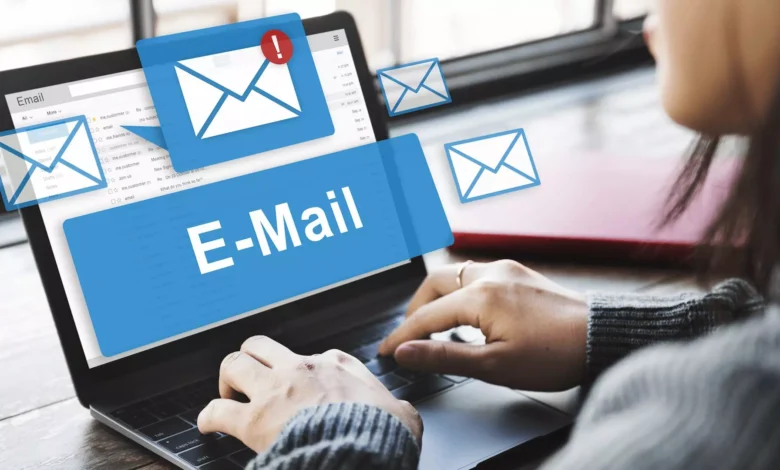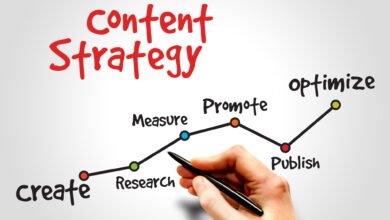Converting Blog Visitors into Leads 3 Proven Email Marketing Tips for Bloggers

Email marketing remains one of the most effective ways for bloggers to convert site visitors into subscribers and leads. In fact, email generates a 4,300% return on investment for every $1 spent.
But with inboxes cluttered and attention spans fleeting, crafting campaigns that cut through the noise can be challenging. That’s why optimizing your approach to nurture visitors into long-term relationships is crucial.
In this comprehensive guide, we provide 3 proven email marketing tips for bloggers along with critical insights, actionable recommendations, and a comparison of top email marketing service providers.
Why Email Marketing Matters for Bloggers
Let’s first examine why email marketing is essential for any blogger.
While social media provides reach, search aims to capture intent, and content fuels discovery – email enables you to own conversations with your target audience.
It’s the only communication channel you truly own and nurtures relationships directly between you and your subscribers without an intermediary like Facebook or Google.
Beyond rentention, emails also serve critical functions in:
- Generating referral traffic: Email updates and newsletters drive repeat visitors who consume more content.
- Building an audience: They help aggregate a subscriber-base as your content and brand grows.
- Monetization: Email enables multiple income streams including sponsorships, affiliate, ads, and selling products.
And with the ability to segment detailed subscriber lists, deliver personalized content, and monitor analytics – no other medium offers the same ROI.
Let’s examine exactly how bloggers can leverage email to convert informal visitors into loyal leads.
3 Proven Tips to Convert Blog Visitors Into Leads
The following 3 tips offer practical steps any blogger can implement immediately to start converting more traffic into leads via email:
1. Gate High-Value Content Behind Opt-In Forms
The most proven tactic is gating your best material behind opt-in forms. This provides immense value in exchange for a lead while filtering for motivated subscribers intrinsically interested in your work.
For example, if certain posts generate lots of shares or searches – convert them into lead magnets rather than giving away easily.
Other content types ideal for gating include:
- Special reports
- Ultimate guides/swipes/templates
- Research data or survey results
- Whitepapers or case studies
- Cheatsheets, checklists, or formulas
Topics that attract visitors likely struggling with problems looking for solutions also make perfect lead magnets in exchange for their emails.
Make sure to only pick content integral to your audience rather than unnecessary tangents. For example, a blogger specializing in email marketing tips would get minimal conversions gating fitness guides even if popular.
Structure the forms for minimal friction rather than overly intrusive. Gradually ask for more information after providing value and gaining trust over time. Effective options include:
- 1-field email signup: Least intrusive perfect for sidebars.
- 2-3 field with interests: Lets you segment while minimizing barriers.
- 4-5 fields including demographics: Good for targeted and detailed analytics.
Finally, promote opt-in forms and gated content across all touchpoints. Insert links in:
- Sidebars
- Navigation menus
- Post footers
- About pages
- Resource pages
- Welcome emails
- Social media
- Calls to action across articles.
This amplifies visibility prompting visitors to subscribe at any point in their journey.
Key Takeaway: Gate your best content like exclusive reports, guides, and tools behind subscriber-only access in exchange for visitor emails to convert directly into leads.
2. Send Targeted Outreach and Onboarding Drip Emails
Another proven technique to convert blog visitors into leads is crafting and sending post-subscription outreach emails introducing your brand and offerings.
New subscribers lack context so it’s essential to onboard them with targeted messaging explaining who you are, the value you offer, why your content matters, and what to expect next.
Send welcome emails immediately after signup with:
- A quick personal message thanking them for subscribing
- Statement of your brand purpose and why they should care
- Notification of what to anticipate moving forward
- Access instructions for gated content as promised
You can also nurture leads with value-driven post-signup drip campaigns covering topics like:
- Best evergreen posts they might have missed
- Most popular recent articles
- Special subscriber-only content
- Survey questions to capture insights
- Requests for feedback on what they want next
- Polls and quizzes for interactive engagements
Sending 2-3 quick follow up emails in a week helps converts signups from cold traffic into engaged returning visitors without overbearing promotional messaging.
Post-onboarding, make sure new subscribers receive your latest content updates so they become familiar with your work right away just like existing leads.
Key Takeaway: Welcome new subscribers and nurture leads via post-signup drip campaigns delivering value to educate on your brand purpose and prime for ongoing engagements.
3. Promote Newsletter Signup Across All Channels
Lastly, aggressively promote email subscription everywhere potential leads might encounter your brand – especially social media.
Visitors attracted to your content elsewhere often overlook subscribing unless explicitly prompted. So spotlight signup forms, promote your newsletter, and link to gated posts persistently.
Some top channels to amplify include:
- Website: Embed forms in headers/footers/sidebars plus content.
- YouTube: Annotations and end screens.
- Social media bios: Summary text explaining offerings
- Forums and groups: Recommend opt-in while sharing expertise
- Guest posts: Small buttons below articles pointing back to gated content
- Paid ads: Retarget visitors with signup ads
- Email signatures: Calls to action in one-click links
- Business cards: Print newsletter URLs as QR codes
This surrounds visitors with multiple touchpoints to subscribe rather than relying solely on one channel.
Key Takeaway: Blanketing your website, social profiles, paid ads, guest posts, email signatures, business cards and more with consistent plugs to subscribe multiplies conversion touchpoints.
By combing these 3 tactics – gating premium content, targeted onboarding drips, and aggressive cross-channel promotion – any blogger can turn more traffic into engaged email subscribers.
Let’s now compare the top-rated email marketing platforms to manage outreach at scale.
Email Marketing Service Comparison
Choosing the right self-serve email platform tailored to bloggers makes all the difference in maximizing deliverability, analytics, and conversion performance.
Below we compare the leading solutions across 8 categories by tier to match capabilities with price points based on audience size and functional needs.
| Feature | MailChimp | ConvertKit | AWeber |
|---|---|---|---|
| Free Plan | |||
| Deliverability | |||
| List Segmentation | |||
| Automations | |||
| Templates | |||
| Integrations | |||
| Ease of Use | |||
| Starting Price |
Below we break down key considerations in choosing an email marketing platform as a blogger:
List size – Free tiers often limit to 2,000 subscribers or less so anticipate growth if launching a newsletter.
Deliverability – Inbox placement rates show the reliability getting into subscriber primary tabs rather than promotions folders.
Segmentation – Dividing contacts into demographics/interests groups enables personalized targeting.
Automations – Workflows that trigger actions based on user behaviors like email opening, clicks, dates, and activity levels.
Templates – Professionally designed email layouts that are pre-formatted for ease of use.
Integrations – Built connectors with other apps like social media, webinars, ecommerce to sync data.
Ease of use – User-friendly enough for non-technical beginner bloggers vs intermediate skills needed.
Price – Paid plans offer premium features but start under $30/month for most needs.
Assess your needs, subscriber goals, and budget to determine the best email marketing platform invest in as a blogger.
Email Marketing: Frequently Asked Questions
Below we answer common blogger questions around maximizing email marketing performance:
What email marketing metrics matter most?
The 5 core metrics to track include:
-
Open rate – Percentage of subscribers opening emails showing engagement. 30%+ is solid.
-
Clickthrough rate – Click percentage indicating content relevancy. 2-5% is good.
-
Conversion rate – Percentage who take intended actions like visiting links, downloads, purchases etc.
-
List growth rate – Speed subscriber numbers increasing over time.
-
Bounce rate – Percentage of non-delivered emails due to invalid addresses sinking deliverability. Sub 5% is healthy.
Monitoring these top-level metrics lets you continually optimize and improve email campaign effectiveness.
What’s the best email newsletter frequency?
According to consumer preferences, the ideal newsletter frequency is:
- 3X a week for daily publishers
- 1-2X a week for most blogs
- 1X a month for niche sites or minimal new content
Typically, the more often you mail the less engagement per email so find the right volume to match production capacity without oversaturating inboxes.
Send slightly more emails than feels annoying as subscribers will simply opt out if you overdo it.
How much does email marketing cost?
Email marketing can cost nothing to start since many providers offer free plans covering basics for small lists.
Once exceeding initial thresholds around 1,000-2,000 subscribers, pricing tiers unlock adding as little as $10-30 monthly for robust needs.
Factors determining investment include number of contacts, send volume, automations needed, premium features, and integrations.
Given email generates up to $44 ROI per $1 spent, almost any budget can gain positive returns when executed well.
Start free then scale pricing levels aligned to growth over time for optimal budget efficiency.
By implementing the preceding tips, tools, and recommendations – bloggers can craft captive email subscriber bases that pay dividends through repeat engagements, referral traffic, and follower growth for years to come.
Remember, visitors who subscribe offer much higher lifetime values than one-off website traffic. So optimizing email capture and retention stands critical to profitability.
Now put these lessons into practice immediately before your next visitor exits without joining your list!






2 Comments